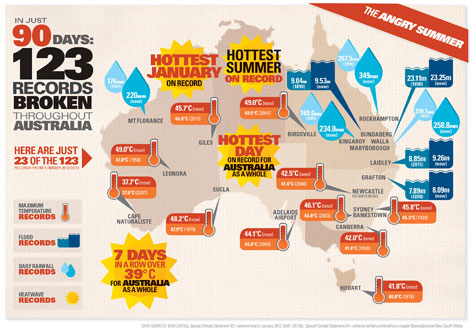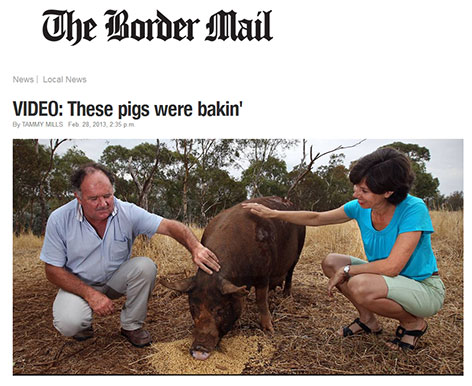When the heat is on: chooks & worms
/
Our house doesn't have evaporative cooling, but our chooks and worms do!
The problem with hot, dry heat like we experienced over summer is that even in the shade (or the chook shed) it was very hot. Up to a point, chickens are quite capable of coping with heat. Their feathers not only insulate them from cold, but also protect them in hot weather. They don't sweat, instead they pant in response to hot temperatures. They struggle when the mercury climbs into the mid-30's and beyond.
To assist, we not only wet down the dirt where they were hanging out and kept up lots of water for drinking, but we provided them with their own evaporative cooling system. It's not nearly as flash as it might at first sound.
Some removalists' felt was draped over structures that the 'girls' could hang out under. We wet it down periodically and the temperature under there was four to ten degrees cooler than nearby in the shade. Not bad! We would re-water it several times a day on hot days. Suggestions online are to use frozen water containers to more slowly release moisture to do the same job, if you're not at home throughout the day. Note that this approach isn't suited to humid conditions, but it worked a treat in our dry heat.
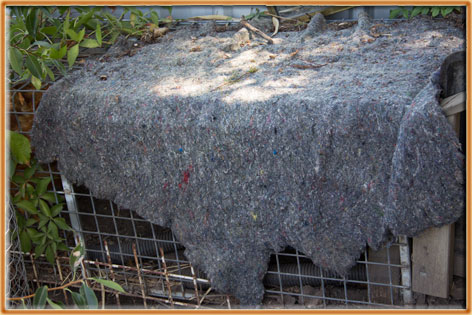
Photo: Felt draped over the fox-proof tunnel that links the chook shed and the mini-orchard. A subsequent structure was more of an 'A' frame from mesh, to allow cooling on three sides.
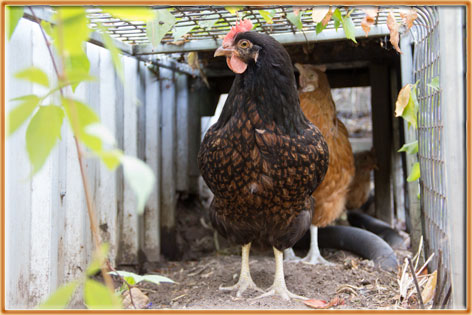
Photo: Looking into the 'tunnel' with felt covering toward the back. This chook wanted to find out why I was taking pictures, while the other two are sipping water as it drips from the wetted felt.
We also made frozen 'pecker blocks' and even fed them cooled food (think grated carrot, zucchini, lettuce, cucumber, etc) to help reduce their body temperature and keep them hydrated. I know others who hose their chickens down with water, but ours really don't seem to like that. If we do wet them, it's by giving them a cool (but not too cold) bath in the outdoor sink. The girls also seek out cooler soil to dust bathe in, and even dig themselves holes to sit in.
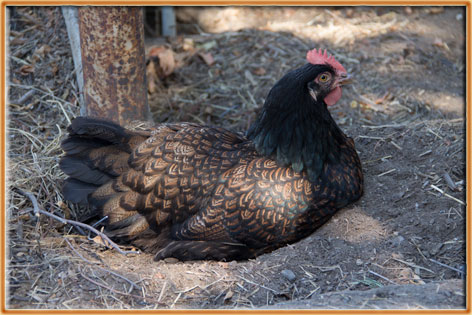
Photo: digging in to create cooler spots to sit.
In the week we hit 43 degrees (according to the BOM), I moved the girls into the bottom of the shed for a few hours in the afternoons. The relative oasis of 23 degrees in there gave them a break from the heat (and we considered joining them, as the temperature in the house was nearly 10 degrees warmer than that, at times in that same week). Side note: I don't think Build-It Bloke was convinced that 'chook respite centre' was consistent with the functions of his 'man-cave'. But then consoling me, had we lost chooks to heat-stroke, probably wasn't a particularly appealing proposition either.
Incidentally, we used similar techniques for our out-of-ground worm farms as for the chooks. We gave them cool food and water, and wet down felt that was draped over their homes, which in turn were located in the shadiest spot we could find for them.
We heard some sad tales of chooks and worms that did succumb to the heat this summer. Have you got other suggestions for helping them to cope when the heat is on?
Note: this post is part two of a little series, if you missed the first one, head here to read it. Next up, honeybees in the heat.


